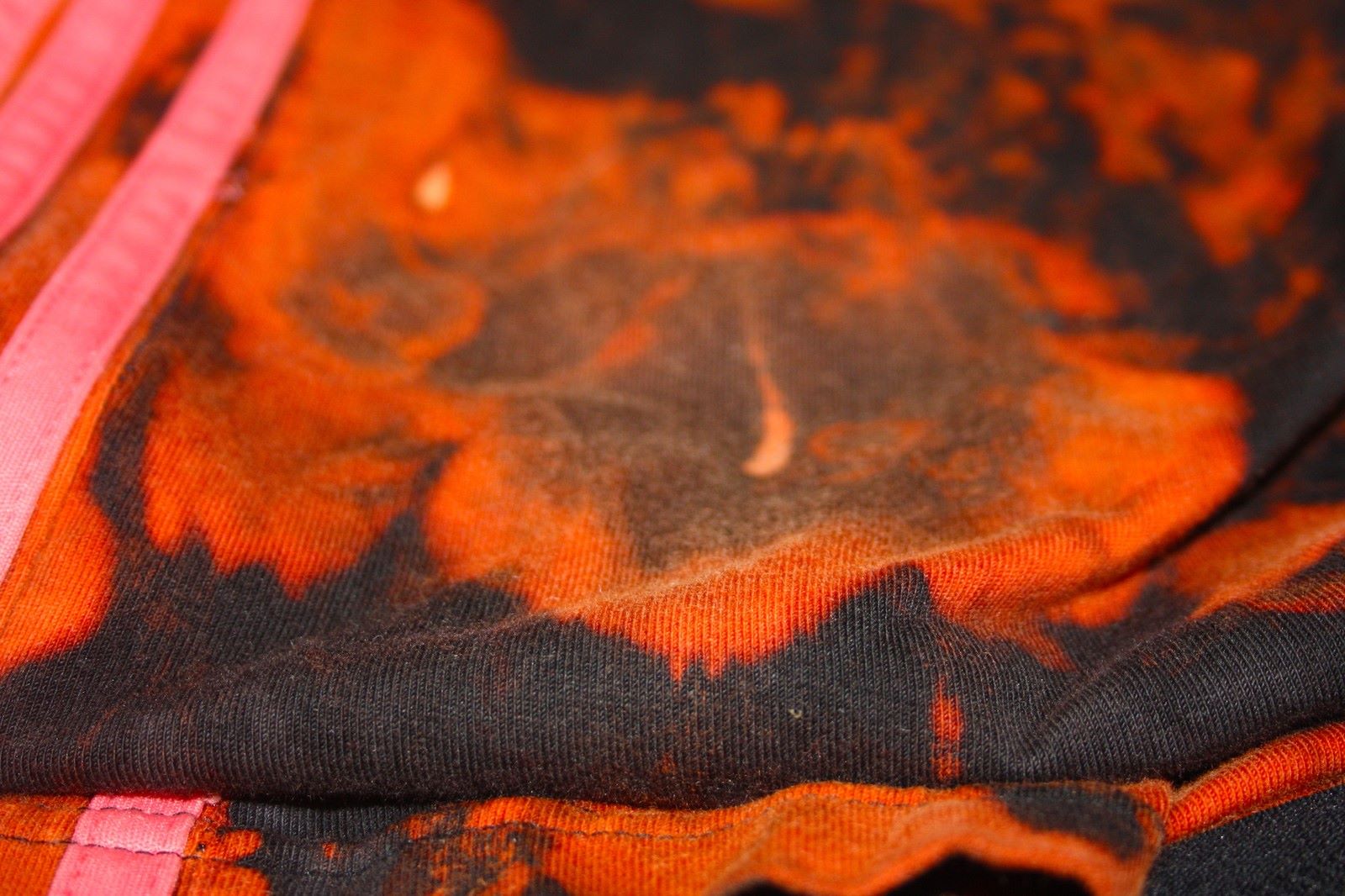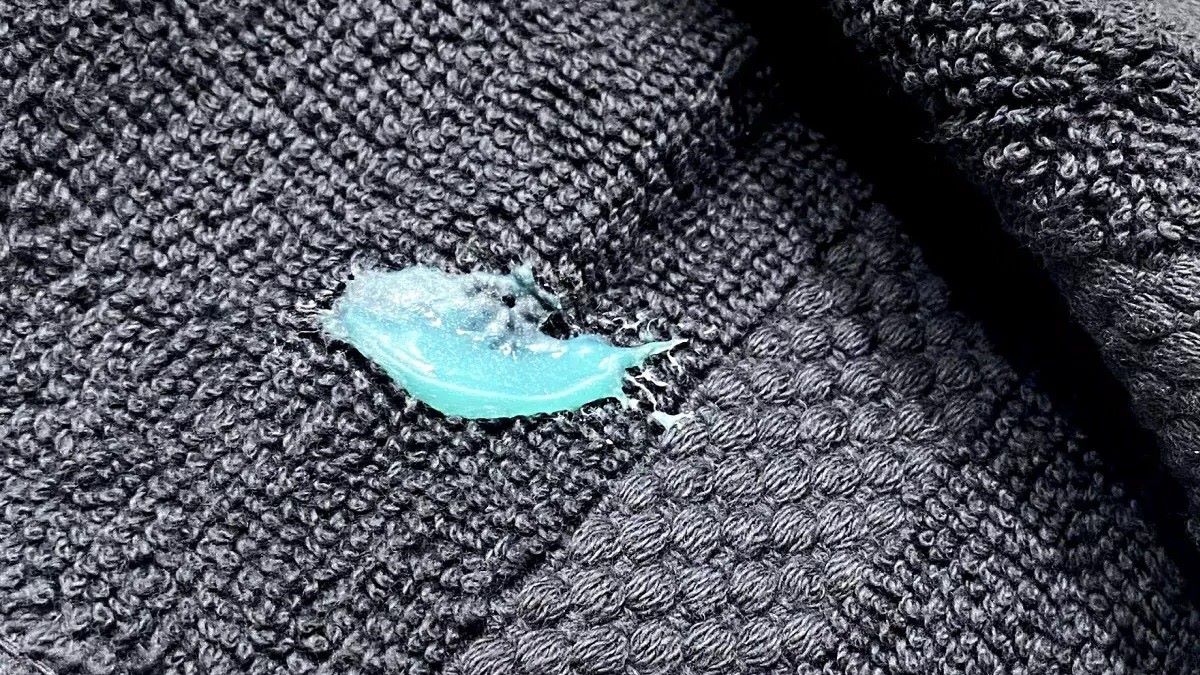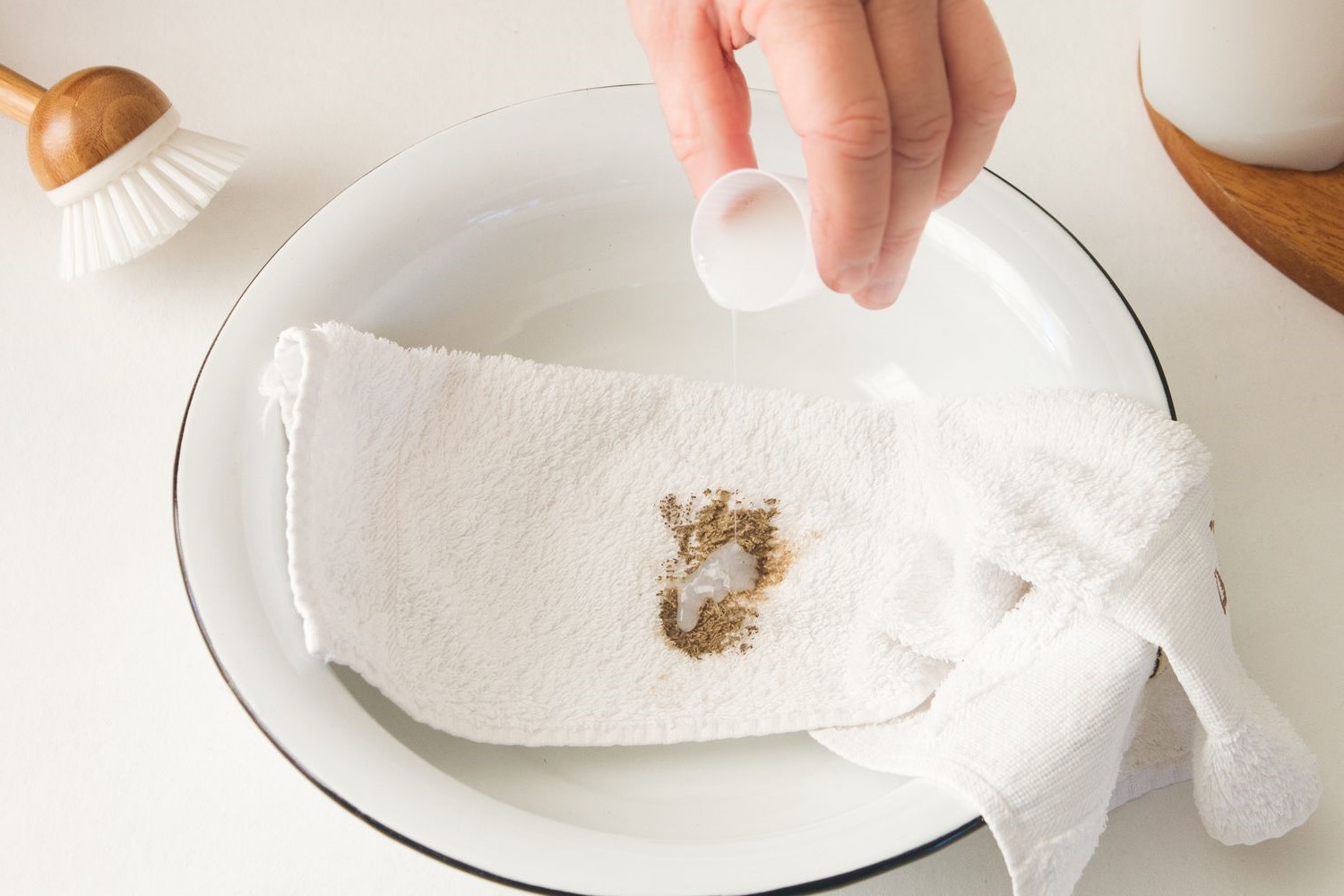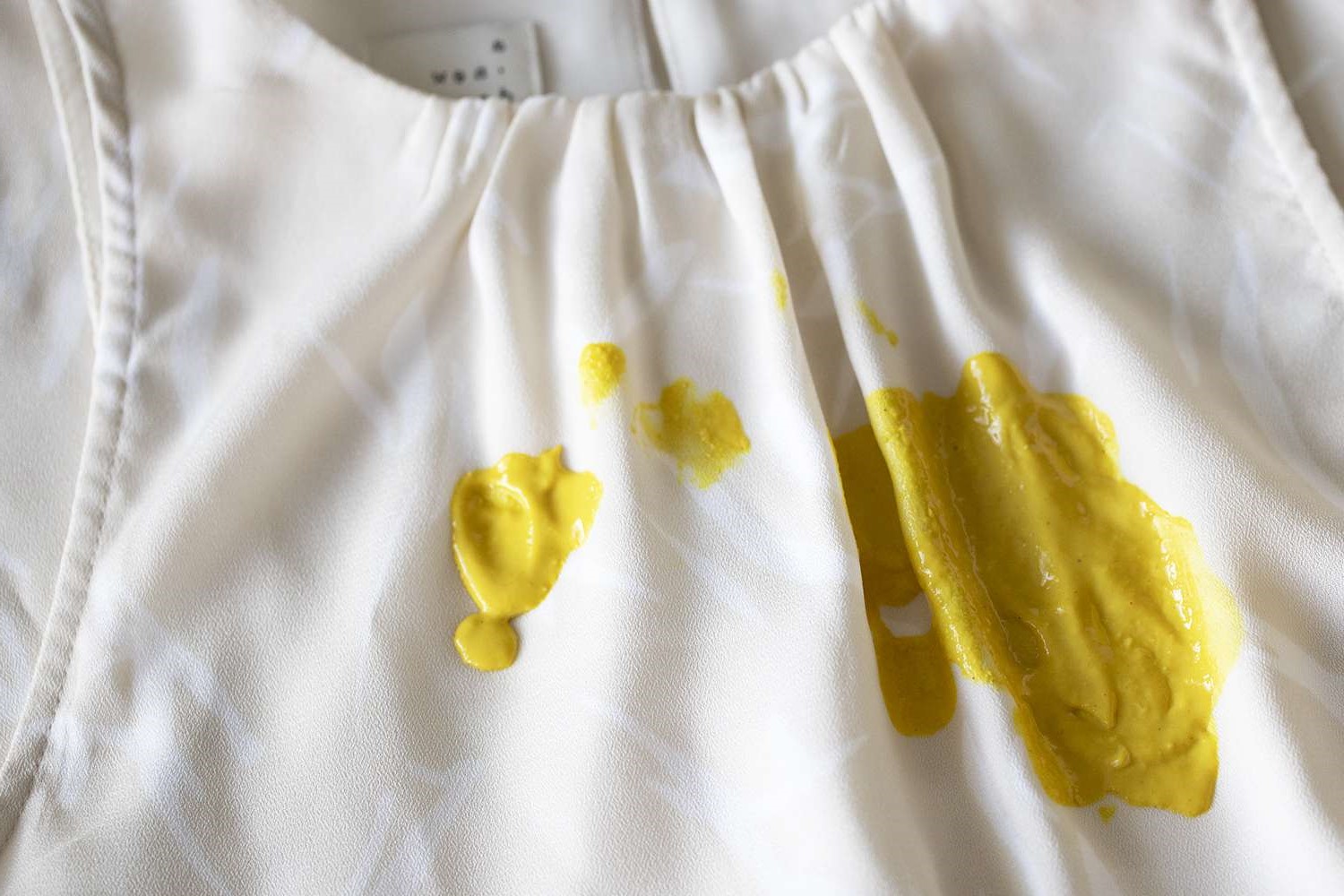Home>Home and Garden>How To Get Gasoline Smell Out Of Clothes


Home and Garden
How To Get Gasoline Smell Out Of Clothes
Published: March 1, 2024
Learn effective home and garden solutions to remove gasoline smell from clothes. Discover simple tips to get rid of the odor and restore your garments to freshness.
(Many of the links in this article redirect to a specific reviewed product. Your purchase of these products through affiliate links helps to generate commission for Noodls.com, at no extra cost. Learn more)
Table of Contents
Introduction
Dealing with the pungent odor of gasoline on clothes can be a challenging and unpleasant experience. Whether it's from a spill at the gas station or an accidental brush against a gas pump, the distinctive smell of gasoline tends to linger stubbornly on fabric, causing discomfort and embarrassment. However, with the right approach and a few effective techniques, it's possible to eliminate this unwelcome scent and restore your clothes to their fresh, clean state.
In this comprehensive guide, we will explore the various methods and products that can help you effectively remove gasoline smell from clothes. From understanding the source of the odor to pre-treating and washing the garments with the right products, we will cover every step of the process. Additionally, we will delve into the importance of proper drying techniques and provide additional tips to ensure that the gasoline smell is completely eradicated.
By following the advice and recommendations outlined in this article, you can regain confidence in wearing your favorite clothes without the lingering reminder of a gasoline mishap. Let's embark on this journey to discover the most effective strategies for banishing gasoline odor from clothes and restoring them to their pristine condition.
Read more: How To Get Smoke Smell Out Of Clothes
Understanding the source of gasoline smell in clothes
The distinct and pervasive odor of gasoline on clothes is a result of the volatile organic compounds (VOCs) present in the fuel. Gasoline contains a complex mixture of hydrocarbons, including benzene, toluene, ethylbenzene, and xylene, which contribute to its potent smell. When gasoline comes into contact with fabric, these volatile compounds can easily permeate the fibers, leading to the lingering and often overpowering scent that is difficult to eliminate.
The porous nature of most fabrics allows them to absorb and retain the gasoline odor, making it challenging to remove through conventional washing alone. Additionally, the molecular structure of gasoline enables it to bond with the fibers of the fabric, further intensifying the persistence of the smell.
Furthermore, the evaporation of gasoline leaves behind a residue that can contribute to the lingering odor on clothes. Even after the initial spill or contact, the volatile components of gasoline continue to evaporate slowly, prolonging the presence of the smell on the fabric.
It's important to note that the intensity of the gasoline smell can vary depending on factors such as the type of fabric, the duration of exposure to the gasoline, and the amount of fuel that has been absorbed. Synthetic fabrics, such as polyester and nylon, may retain the odor more stubbornly than natural fibers like cotton or wool.
Understanding the source of the gasoline smell in clothes is crucial for devising effective strategies to eliminate it. By recognizing the chemical composition of gasoline and its interaction with fabric, we can tailor our approach to effectively neutralize and remove the lingering odor, restoring the clothes to their original freshness.
In the following sections, we will delve into pre-treating clothes, selecting the right products for washing, and employing proper drying techniques to ensure the complete eradication of the gasoline smell from clothes.
Pre-treating clothes before washing
Pre-treating clothes before washing is a crucial step in effectively removing gasoline smell from fabric. This process involves targeted techniques and products designed to break down and lift the gasoline residues from the fibers, preparing the clothes for thorough cleansing during the washing cycle. By implementing the following pre-treatment methods, you can significantly improve the chances of completely eliminating the gasoline odor from your clothes.
1. Immediate Action:
Upon discovering gasoline on your clothes, it's essential to act promptly. Blot the affected area with paper towels or clean cloth to absorb as much of the liquid as possible. Avoid rubbing the fabric, as this can spread the gasoline and deepen its penetration into the fibers.
2. Vinegar Solution:
Vinegar, with its acidic properties, is highly effective in neutralizing and eliminating odors, including the lingering smell of gasoline. Prepare a solution of one part white vinegar to two parts water. Dab this solution onto the affected areas of the clothes using a clean cloth or sponge. Allow it to sit for 15-20 minutes to penetrate the fabric and break down the gasoline residues.
Read more: How To Get Diesel Smell Out Of Clothes
3. Baking Soda Paste:
Baking soda is renowned for its odor-absorbing qualities and gentle abrasive action, making it an excellent pre-treatment for gasoline-affected clothes. Create a paste by mixing baking soda with a small amount of water. Gently apply this paste to the affected areas, ensuring that it covers the gasoline stains thoroughly. Leave the paste on the fabric for 30 minutes to an hour before proceeding to the washing stage.
4. Enzyme-Based Pre-Treaters:
Enzyme-based pre-treatment products are specifically formulated to target organic stains and odors, including those caused by gasoline. These products contain enzymes that break down the hydrocarbons present in gasoline, effectively neutralizing the odor. Apply the enzyme-based pre-treater directly to the affected areas of the clothes, following the manufacturer's instructions for the recommended duration of pre-treatment.
5. Sunlight Exposure:
Exposing the gasoline-affected clothes to direct sunlight can help dissipate the odor and aid in the breakdown of gasoline residues. Hang the garments outdoors in a well-ventilated area, allowing the sunlight to naturally deodorize and freshen the fabric. This method can be particularly effective when combined with other pre-treatment techniques.
By diligently pre-treating clothes before washing, you can significantly enhance the success of removing gasoline smell from fabric. These targeted methods work to break down the gasoline residues and neutralize the odor, setting the stage for a thorough washing process that will restore your clothes to their pristine condition.
Washing clothes with the right products
Selecting the appropriate products for washing gasoline-affected clothes is essential to effectively eliminate the lingering odor and ensure thorough cleansing. When dealing with gasoline smell on fabric, it's crucial to choose detergents and additives that are specifically formulated to break down and remove hydrocarbon residues while preserving the integrity of the garments. Here are the key considerations and recommended products for washing clothes to eradicate gasoline odor:
Read more: How To Get Urine Smell Out Of Clothes
1. Choosing the Right Detergent:
Opt for a high-quality detergent that is designed to tackle tough odors and stains. Look for detergents that contain powerful surfactants and enzymes, as these components are effective in breaking down hydrocarbons and lifting them from the fabric. Additionally, selecting a detergent with a fresh, long-lasting scent can help mask any residual gasoline odor after washing.
2. Enzyme-Based Laundry Additives:
Supplementing the wash cycle with enzyme-based laundry additives can significantly enhance the odor-removal process. Enzymes, such as protease and amylase, target organic residues and effectively break them down during the washing cycle. These additives work synergistically with the detergent to ensure thorough cleansing and deodorization of the gasoline-affected clothes.
3. Oxygenated Bleach:
For white or colorfast garments, oxygenated bleach can be a valuable addition to the washing process. Oxygenated bleach is gentle on fabrics while being highly effective in removing organic stains and odors. When used as directed, it can help lift any remaining gasoline residues and brighten the clothes without compromising their color or integrity.
4. White Vinegar as a Natural Deodorizer:
Incorporating white vinegar into the rinse cycle can serve as a natural deodorizing agent, effectively neutralizing any lingering gasoline odor. Add half a cup of white vinegar to the final rinse to help freshen the clothes and eliminate any residual scent. The acidic nature of vinegar aids in breaking down odors while softening the fabric.
Read more: How To Get Perfume Smell Out Of Clothes
5. Fragrance-Free Fabric Softeners:
When using fabric softeners, opt for fragrance-free varieties to avoid masking the gasoline odor with artificial scents. Fabric softeners can help maintain the softness and suppleness of the fabric, but it's important to choose products that do not introduce additional fragrances that may compete with or exacerbate the gasoline smell.
By carefully selecting the right products for washing gasoline-affected clothes, you can ensure a thorough and effective cleansing process that targets the odor at its source. These products work in harmony to break down gasoline residues, neutralize the odor, and leave the clothes fresh and free from any lingering scent. With the proper washing products and techniques, you can confidently restore your garments to their pristine condition, ready to be worn without any reminder of the gasoline mishap.
Drying clothes properly
After the washing process, the final step in effectively removing gasoline smell from clothes is ensuring that they are dried properly. Proper drying techniques not only help eliminate any residual odor but also prevent the re-emergence of the gasoline smell. Here are the essential guidelines for drying gasoline-affected clothes to achieve optimal results:
-
Air Drying: Opt for air drying the clothes instead of using a dryer, as the latter can lock in any remaining gasoline odor. Choose a well-ventilated area, preferably outdoors, to hang the garments. This allows for natural air circulation, which aids in dissipating any lingering scent and promoting overall freshness.
-
Sunlight Exposure: If feasible, harness the natural deodorizing power of sunlight by hanging the clothes in direct sunlight. Sunlight not only helps dry the fabric thoroughly but also assists in breaking down any remaining gasoline residues. The ultraviolet (UV) rays act as a natural disinfectant and deodorizer, contributing to the overall freshness of the garments.
-
Proper Ventilation: Ensure that the drying area is well-ventilated to facilitate the dissipation of odors. A gentle breeze can help carry away any residual gasoline smell, leaving the clothes smelling fresh and clean. If outdoor drying is not possible, choose a well-ventilated indoor area with adequate airflow.
-
Avoiding Heat: Refrain from using high heat during the drying process, whether it's in a dryer or through direct heat exposure. High temperatures can cause any remaining gasoline residues to become more pronounced, negating the efforts made during pre-treatment and washing. Opt for gentle, cool air drying to prevent the reactivation of the gasoline odor.
-
Patience: Allow the clothes to dry thoroughly before storing or wearing them. Rushing the drying process can lead to the retention of moisture, which may exacerbate any remaining gasoline smell. Exercise patience and ensure that the garments are completely dry before they are put away.
By adhering to these guidelines and employing proper drying techniques, you can effectively eliminate the gasoline smell from clothes and restore them to a fresh, odor-free state. The combination of air drying, sunlight exposure, proper ventilation, and patience ensures that the garments are thoroughly deodorized and ready to be worn without any lingering reminders of the gasoline mishap.
Additional tips for removing gasoline smell from clothes
In addition to the pre-treating, washing, and drying methods discussed earlier, there are several supplementary tips and techniques that can further aid in removing gasoline smell from clothes. These additional strategies are designed to complement the primary odor-removal process and enhance the overall effectiveness of restoring the garments to their pristine condition.
-
Activated Charcoal Odor Absorbers:
Activated charcoal is renowned for its exceptional odor-absorbing properties. Placing activated charcoal odor absorbers, such as sachets or pouches, alongside the gasoline-affected clothes can help absorb and neutralize lingering odors. The porous structure of activated charcoal enables it to trap and eliminate volatile compounds, including those responsible for the gasoline smell, leaving the garments fresh and odor-free. -
Citrus-Based Deodorizing Sprays:
Citrus-based deodorizing sprays or mists can serve as natural and refreshing odor-neutralizing agents. Look for products that contain essential oils derived from citrus fruits, such as lemon or orange. Lightly misting the clothes with a citrus-based spray after the washing and drying process can impart a pleasant, natural fragrance while effectively masking any residual gasoline odor. -
Linen and Fabric Refreshers:
Utilize linen and fabric refreshers that are specifically formulated to eliminate odors and freshen clothes. These products are designed to neutralize a wide range of odors, including gasoline, without leaving behind overpowering fragrances. Spritzing the garments with a linen refresher and allowing them to air out can contribute to a clean and revitalized scent. -
Steam Treatment:
Steam can be an effective natural deodorizing agent for clothes. Using a handheld garment steamer, gently pass the steam over the gasoline-affected areas of the fabric. The heat and moisture from the steam can help open up the fibers and release any trapped odors, resulting in a refreshed and deodorized garment. -
Professional Dry Cleaning:
For delicate or challenging-to-treat garments, seeking professional dry cleaning services can be a viable option. Professional dry cleaners have the expertise and specialized techniques to effectively remove stubborn odors, including gasoline, from a wide range of fabrics. Consult with a reputable dry cleaner to explore this option for particularly sensitive or valuable clothing items.
By incorporating these additional tips into the odor-removal process, you can further enhance the success of eliminating gasoline smell from clothes. These supplementary strategies offer targeted approaches to neutralizing odors and revitalizing the garments, ensuring that they are free from any lingering traces of gasoline. With a comprehensive and multi-faceted approach, you can confidently restore your clothes to their original freshness, ready to be worn without any reminder of the gasoline mishap.
Conclusion
In conclusion, successfully removing gasoline smell from clothes requires a comprehensive approach that addresses the unique challenges posed by hydrocarbon residues. Understanding the source of the odor, pre-treating the clothes before washing, selecting the right products for washing, and employing proper drying techniques are essential steps in achieving optimal results. By recognizing the chemical composition of gasoline and its interaction with fabric, we can tailor our approach to effectively neutralize and remove the lingering odor, restoring the clothes to their original freshness.
Pre-treating clothes with immediate action, vinegar solutions, baking soda paste, enzyme-based pre-treaters, and sunlight exposure sets the stage for thorough cleansing during the washing process. Selecting the appropriate products for washing, including high-quality detergents, enzyme-based laundry additives, oxygenated bleach, white vinegar as a natural deodorizer, and fragrance-free fabric softeners, ensures the effective removal of gasoline residues and odor.
Proper drying techniques, such as air drying, sunlight exposure, proper ventilation, avoiding heat, and exercising patience, play a crucial role in eliminating any residual odor and preventing the re-emergence of the gasoline smell. Additionally, incorporating activated charcoal odor absorbers, citrus-based deodorizing sprays, linen and fabric refreshers, steam treatment, and professional dry cleaning as supplementary tips can further enhance the success of odor removal.
By diligently following these methods and techniques, individuals can confidently restore their garments to a fresh, odor-free state, ready to be worn without any lingering reminders of the gasoline mishap. The combination of targeted pre-treatment, effective washing products, proper drying, and supplementary tips ensures that the gasoline smell is completely eradicated, allowing individuals to reclaim their favorite clothes without the discomfort and embarrassment associated with lingering odors.
In essence, the successful removal of gasoline smell from clothes not only restores the garments to their pristine condition but also provides individuals with the confidence to wear their clothes without the persistent reminder of a gasoline mishap. By combining knowledge of the source of the odor with practical and effective strategies, individuals can overcome the challenges posed by gasoline residues and enjoy fresh, clean clothes once again.












